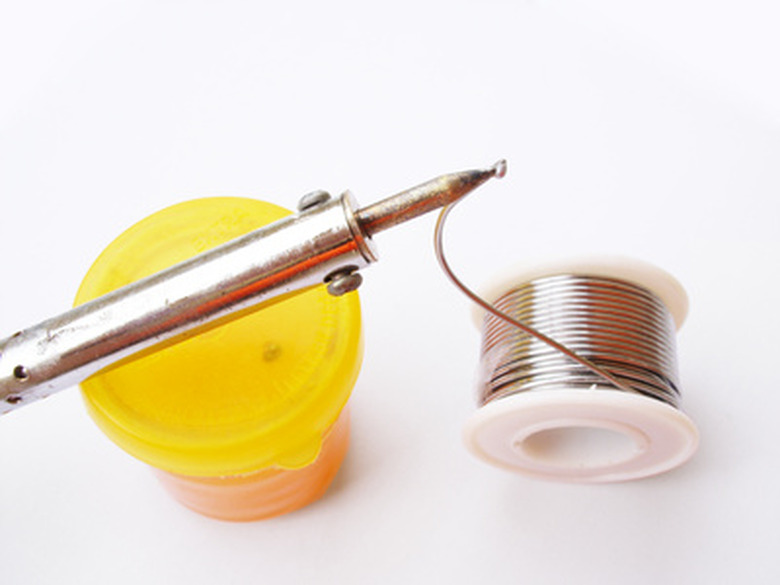Composition Of Solder Wire
Solder is a fusible alloy used to join less fusible metals or wires, etc. Solder is sold in spools of wire or in bars. Solder wire is comprised of different alloys, or of pure tin. Each metal requires a certain type of soldering wire to create strong bonds, because the combinations of metals that comprise soldering wire melt at different temperatures.
Leaded Compounds
Leaded Compounds
Soft soldering wire that contains lead is comprised of combinations of tin, lead, silver, cadmium and copper. Combinations of tin and lead are most common, in ratios of 60 percent tin/40 percent lead; 63 percent tin/37 percent lead; and 50 percent tin/50 percent lead. These solders melt in a range from 361 to 421 degrees with the higher the percentage of lead, the higher the melting point.
Lead-Free Compounds
Lead-Free Compounds
Lead-free soldering wire is comprised of various combinations of tin, copper, silver and antimony. Pure tin wire has the highest melting point of 449 degrees. Other combinations of metals melt in a range between 419 and 441 degrees.
Uses
Uses
Lead-free soldering wires include varieties with "no clean" flux that are used in electronics. No clean flux does not leave a residue of foreign particles after fusing. Stainless steel requires an acid core soldering wire. Rosin core wire creates bonds with extra strength.
Cost
Cost
Leaded solder wire is less expensive than lead-free solder wire. Prices vary according to the metallic content of each alloy, and the size of the spool.
References
- Oxford Dictionary and Thesaurus, American Edition
- SRA: Soft Soldering Wire
- SRA: Lead-free Soft Soldering Wire
